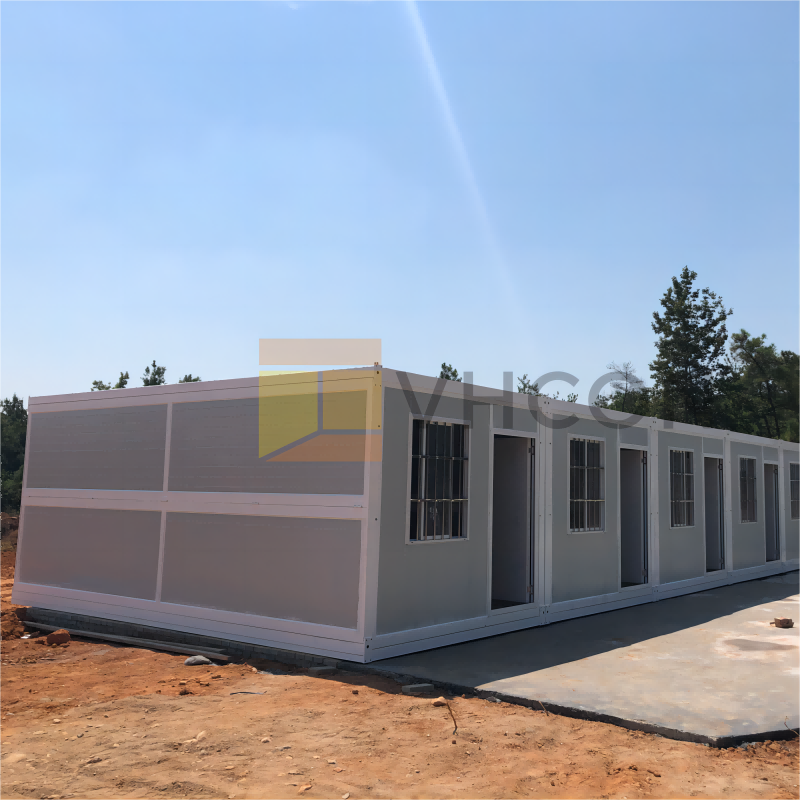Container houses have gained popularity as cost-effective and sustainable housing solutions. Among the various types available, folding container houses and assemble container houses offer distinct features and advantages. This article aims to explore the key differences between these two types of container houses.
Design and Structure:
The primary difference between folding container houses and assemble container houses lies in their design and structure. Folding container houses are designed to fold and unfold, allowing for easy transportation and quick assembly. They come in a compact form when folded and expand to full-size structures when unfolded. On the other hand, assemble container houses consist of individual containers that are attached or stacked together to form a larger living space. These containers are not designed to fold or collapse.
Portability and Transportation:
Folding container houses are highly portable due to their collapsible design. When folded, these houses can be stacked together and transported efficiently using trucks, ships, or airplanes. In contrast, assemble container houses are transported as separate units and then assembled on-site. While they can be relocated, the process requires disassembling and reassembling the individual containers, which is more time-consuming and labor-intensive.
Assembly Time:
Folding container houses provide a significant advantage in terms of assembly time. They can be quickly unfolded and set up within a short period. This saves valuable time and resources compared to assemble container houses, which require more time for attaching and securing the containers together. The quick assembly time of folding container houses makes them suitable for temporary housing needs or emergency situations where immediate shelter is required.
Customization and Expansion:
When it comes to customization and expansion options, assemble container houses offer more flexibility. The individual containers can be easily modified or combined to create larger living spaces or add extra rooms. This adaptability makes assemble container houses suitable for various purposes, such as residential, commercial, or industrial applications. On the other hand, folding container houses, due to their collapsible design, have limited customization options and are not as easily expandable.
Structural Integrity:
Both folding container houses and assemble container houses are designed with durability in mind. However, assemble container houses tend to offer better structural integrity. The containers are securely attached to each other, forming a solid structure that can withstand various weather conditions and external forces. Folding container houses can also be structurally sound, but their collapsible nature may affect their overall strength. Proper anchoring and reinforcement measures are necessary to ensure stability.
Cost Considerations:
In terms of cost, folding container houses and assemble container houses have distinct factors to consider. Folding container houses may offer cost savings during transportation and assembly due to their compact design and quick setup time. However, the folding mechanism and specialized manufacturing process may result in slightly higher initial costs. Assemble container houses, while requiring more time and labor for assembly, generally have lower initial costs as they do not involve complex folding mechanisms.
Folding container houses and assemble container houses each have unique features and advantages. Folding container houses excel in portability, quick assembly, and easy transportation, making them suitable for temporary housing needs. Assemble container houses provide more customization options, enhanced structural integrity, and flexibility for expansion, making them ideal for various applications. Understanding these differences can help individuals and organizations choose the most appropriate type of container house based on their specific requirements and budget constraints.
Post time: Jul-03-2023








